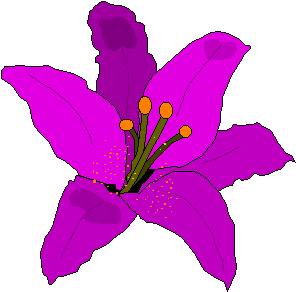
The Language of Flowers
When one hears the word "Victorian," flowers immediately come to mind. Flowers adorned everything Victorian, from wallpaper and Valentine cards to pert bonnets and young girls' samplers. So it isn't surprising that the inventive Victorians also created an elaborate mode of communication using their beloved flower.
The origin of the language pre-dates Victorian times, however, as flowers have always had religious, mythological and symbolic meanings. Mme. Charlotte de la Tour penned the first flower dictionary in 1818 in Paris. Entitled Le Language des Fleurs, it was an overnight sensation. A Victorian lady, Miss Corruthers of Inverness, wrote an entire book on the subject in 1879. Her book became the standard source for flower symbolism both in England and the United States.
Victorian women elaborated on floriography (the assigning of meanings to flowers), expressing their feelings within the boundaries of a strict etiquette. Flowers afforded them a silent language that allowed them to communicate many sentiments that the propriety of the times would not normally allow. This practice was especially popular amongst lovers. Also, anything that carried the scent of a particular plant, like a handkerchief, carried the same message.
A man could convey his feelings, then, by having just the right flowers delivered to his lady the morning after a dinner party or dance. Is he trying to win his lady's heart? Perhaps he'd send her Snowdrops for hope, decorated with Peppermint for warmth of feeling. Did he behave abominably the night before, flirting with other women? He should send Field Lilacs for humility, or Brambles for remorse. Maybe he wants nothing more to do with the lady in question. Flowers can send a message of finality as well as affection. A striped carnation can mean refusal, while the York and Lancaster Rose declares war.
Of course, more than one type of flower may be used to convey one's message, just as one flower can have many meanings depending upon color and size. The rose is the best example of this. As everyone knows, the rose indicates love. But a deep red rose may signify bashful shame, while a white rose states, "I am worthy of you." On the other hand, a white rosebud indicates girlhood, while red rosebuds mean pure and lovely. To take this even a step further, white and red roses mixed together mean unity. Each variety of rose has its own particular meaning also. A Damask Rose may admire a brilliant complexion, while a Cabbage Rose is an ambassador of love.
The list is endless, even to the point that different sources may give you different meanings, and mixing flowers can change their meaning entirely. Below is a listing of the more popular flowers and their meanings.
|
Acacia--secret love
|
Morning Glory--affectation |
The message didn't have to be conveyed through a live flower, necessarily, either. Cards, such as Valentines, decorated with the right flowers could speak volumes. A personal gift such as a floral embroidered hanky revealed feelings also.

These aren't the only superstitions associated with flowers. Who hasn't plucked petals from a daisy, saying "he loves me, he loves me not . . . ?" Another custom involves the spring season. It is said that in spring, if you happen to find the first flower of the season on a Monday, it is good fortune for the season. If on a Tuesday, your greatest attempts will be successful. On Wednesday, it denotes marriage. On Thursday, a warning of small profits. Friday means wealth, while Saturday brings misfortune and Sunday is excellent luck for many weeks to come.
And what if the first flower you find is wild? Check to see what type it is, then watch for someone with the same initial to become interested in you. For example, if you found a buttercup, someone whose name starts with 'B' will come into your life.
Even Queen Victoria believed in the language of flowers. Among other flowers, she had myrtle in her bridal bouquet to symbolize constancy in affection and duty. She later had it planted, so to this day, at every royal wedding in England, a piece of her myrtle is either tucked into the bride's bouquet, or is added to one of the floral arrangements at the wedding breakfast.
Is it any wonder then, that poets have sung the rose's praises for time eternal?
![]()
For more information on this topic, see A Victorian Grimoire by Patricia Telesco and The Language of Flowers by Kate Greenaway, both available for purchase in our on-line bookstore in the non-fiction section.
See also Researching the Romance on this site for a detailed bibliography of this and other research topics.
Top of Page | About Literary Liaisons | Author Links | Bookstore Index | Fiction | Non-Fiction | Feature Title | Newsletter | Research Articles | Reference Books | On-line Resources | RWA Chapters | Sign Our Guestbook | Contact Us | Home
Copyright 1997, M. Hoppe